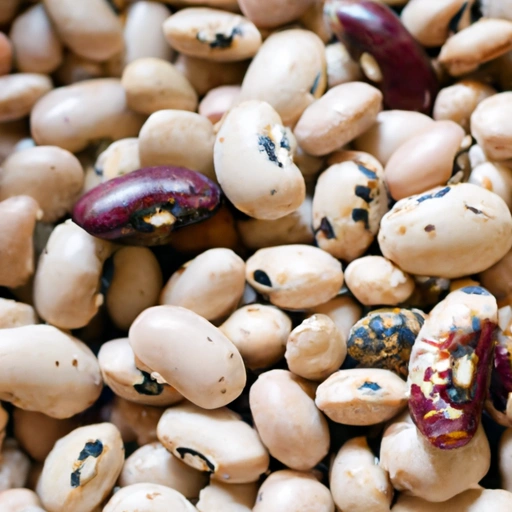Dry Beans
Description

Dry beans are a staple food ingredient known for their versatility and nutritional benefits. They are the dried and mature seeds of leguminous plants and come in a myriad of varieties, each with unique flavors and culinary uses. Dry beans need to be soaked and cooked before consumption, transforming into a tender and flavorful component of many dishes. In recipes, measurements may be given in cups (American), grams (European), or other units, making them accessible to a global audience.
Common uses
Dry beans are commonly used in a variety of dishes, ranging from soups and stews to salads and sides. They are a popular choice for vegetarian and vegan meals as a hearty protein substitute. Additionally, they serve as a base for dips, spreads, and as a filling ingredient in wraps and burritos.
Nutritional value
Calories
On average, a 1/4 cup (approximately 50g) serving of dry beans contains about 120 calories (502 kJ).
Protein
Dry beans are an excellent source of protein, with about 7-10 grams per 1/4 cup (50g) serving.
Fat
They are low in fat, generally containing less than 1 gram per 1/4 cup (50g) serving.
Carbohydrates
Carbohydrates in dry beans are abundant, typically ranging from 20-25 grams per 1/4 cup (50g) serving, most of which are complex carbohydrates and dietary fiber.
Vitamins
Dry beans are a good source of various B-vitamins, including folate.
Minerals
They are rich in essential minerals such as iron, magnesium, potassium, and phosphorus.
Health benefits
Dry beans offer numerous health benefits, including aiding digestion due to their high fiber content, supporting cardiovascular health, and helping to manage blood sugar levels. They are also associated with a lower risk of chronic diseases such as obesity, diabetes, and certain types of cancer.
Potential risks
Some individuals may experience gastrointestinal discomfort, such as gas or bloating, when consuming dry beans. This is typically due to the oligosaccharides they contain, which can be mitigated by proper soaking and cooking. Additionally, those with specific food allergies should exercise caution.
Common recipes
Popular recipes featuring dry beans include chili, bean soup, hummus, black bean brownies, and rajma (an Indian kidney bean curry).
Cooking methods
Soaking and boiling are the most common methods used to prepare dry beans. They can also be cooked in a pressure cooker or slow cooker to reduce cooking time.
Pairing with other ingredients
Dry beans pair well with grains such as rice or quinoa, vegetables, meats, and a variety of seasonings from around the world.
Summary
Dry beans are a diverse and nourishing ingredient cherished by numerous cultures globally. With a rich history, vast culinary applications, and numerous health benefits, they are an invaluable addition to any kitchen. By understanding how to prepare and integrate dry beans into various dishes, one can enjoy their robust flavor and nutritional advantages.